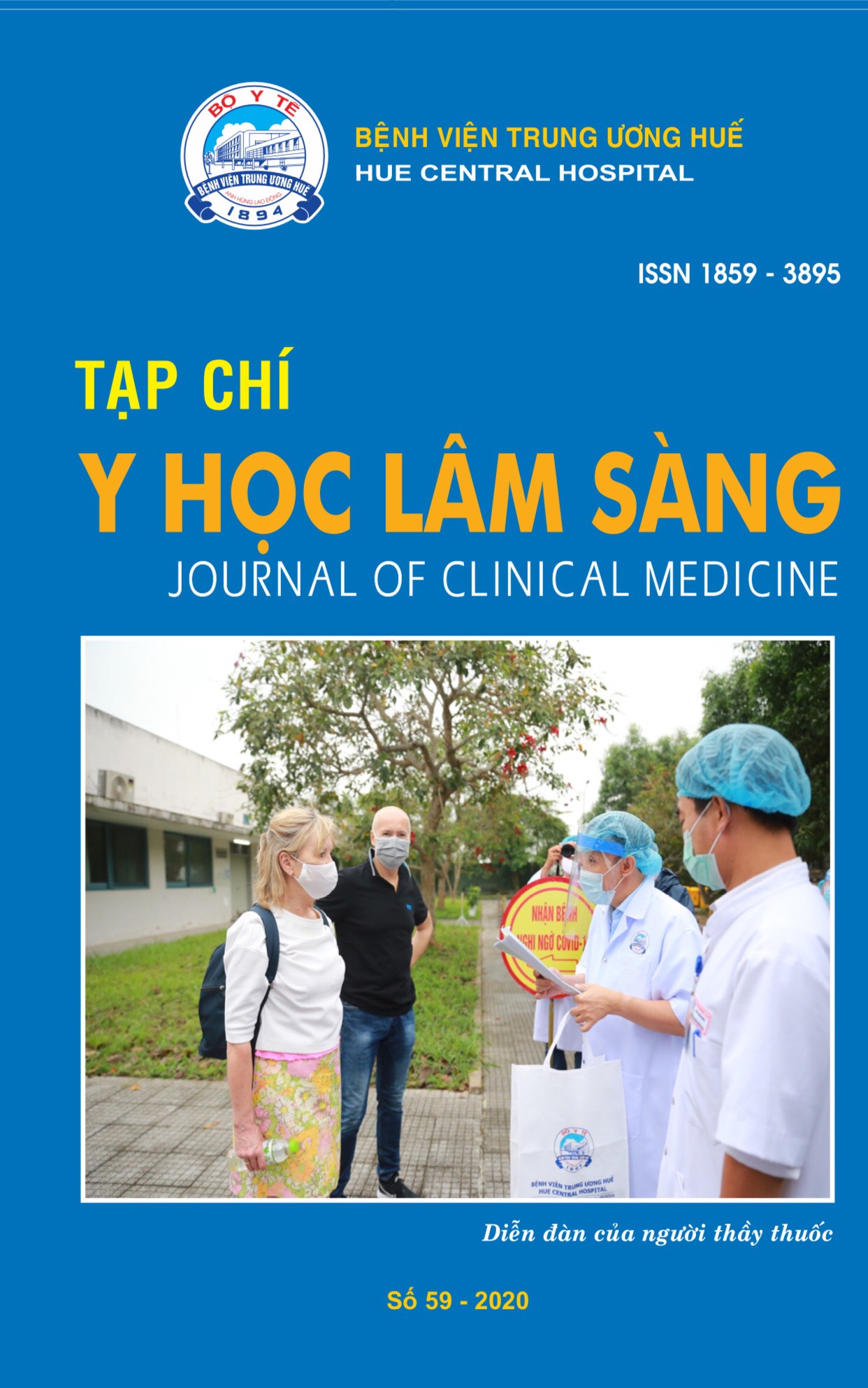Abstract
Objective: To describe of clinical features, imaging finding and evaluate the results of intracranial aneurysm microsurgical treatment by clipping.
Methods: Prospective described study of 41 cases of cranial aneurysm indicated to surgical treatment at Neurosurgery Department - Hue central hospital from March - 2017 to June - 2019.
Results: The outcome at the time discharged from hospital, 65,8% had good recovery (GOS 4-5), 7.3% had moderate outcome (GOS 3) and 26.9% had bad outcome (GOS 1-2), 10 patients died (24.4%). The proportion of better recovery after 3 months was 29%, and1 patient died at home. Checked DSA after surgery, 96.9% of aneurysm was completely removed
Conclusions: The proportion of ruptured intracranial aneurysm is very low, but the outcome is often bad. Nowadays, there are many method treatment for intracranial aneurism, but microsurgical treatment still remains its important roles and is improvement for better outcome.
References
Vũ Minh Hải, (2014), Nghiên cứu chẩn đoán và điều trị phẫu thuật túi phình động mạch não vỡ, Luận án Tiến sĩ y học, Đại học Y Hà Nội.
Nguyễn Thế Hào, (2006), Nghiên cứu chẩn đoán và điều trị phẫu thuật chảy máu dưới màng nhện do vỡ túi phình hệ động mạch cảnh trong, Luận án Tiến sĩ Y học, Trường Đại học Y Hà Nội. 3. Nguyễn Sơn, (2010), Nghiên cứu lâm sàng, chẩn đoán hình ảnh và điều trị vi phẫu thuật kẹp túi phình động mạch não trên lều đã vỡ, Luận án Tiến sỹ Y học, Học viện Quân Y.
De Rooij N K, Linn F H, van der Plas J A, Algra A, et al, (2007), “Incidence of subarachnoid haemorrhage: a systematic review with emphasis on region, age, gender and time trends”, J Neurol Neurosurg Psychiatry, 78 (12), pp. 1365-1372.
Etminan N, Chang H S, Hackenberg K, de Rooij N K, et al, (2019), “Worldwide Incidence of Aneurysmal Subarachnoid Hemorrhage According to Region, Time Period, Blood Pressure, and Smoking Prevalence in the Population: A Systematic Review and Metaanalysis”, JAMA Neurol, 76 (5), pp. 588-597.
Haley E C, Jr., Kassell N F, Torner J C, (1992), “The International Cooperative Study on the Timing of Aneurysm Surgery. The North American experience”, Stroke, 23 (2), pp. 205-214.
Jaja B N, Lingsma H, Schweizer T A, Thorpe K E, et al, (2015), “Prognostic value of premorbid hypertension and neurological status in aneurysmal subarachnoid hemorrhage: pooled analyses of individual patient data in the SAHIT repository”, J Neurosurg, 122 (3), pp. 644-652.
Pegoli M, Mandrekar J, Rabinstein A A, Lanzino G, (2015), “Predictors of excellent functional outcome in aneurysmal subarachnoid hemorrhage”, J Neurosurg, 122 (2), pp. 414-418.
Thompson B G, Brown R D, Jr., AminHanjani S, Broderick J P, et al, (2015), “Guidelines for the Management of Patients With Unruptured Intracranial Aneurysms: A Guideline for Healthcare Professionals From the American Heart Association/American Stroke Association”, Stroke, 46 (8), pp. 2368-2400.
| Published | 20-02-2020 | |
| Fulltext |
|
|
| Language |
|
|
| Issue | No. 59 (2020) | |
| Section | Original article | |
| DOI | 10.38103/jcmhch.2020.59.2 | |
| Keywords | túi phình động mạch não, kẹp clip vi phẫu intracranial aneurysm, microsurgical treatment by clipping |

This work is licensed under a Creative Commons Attribution-NonCommercial-NoDerivatives 4.0 International License.
Copyright (c) 2020 Journal of Clinical Medicine Hue Central Hospital

